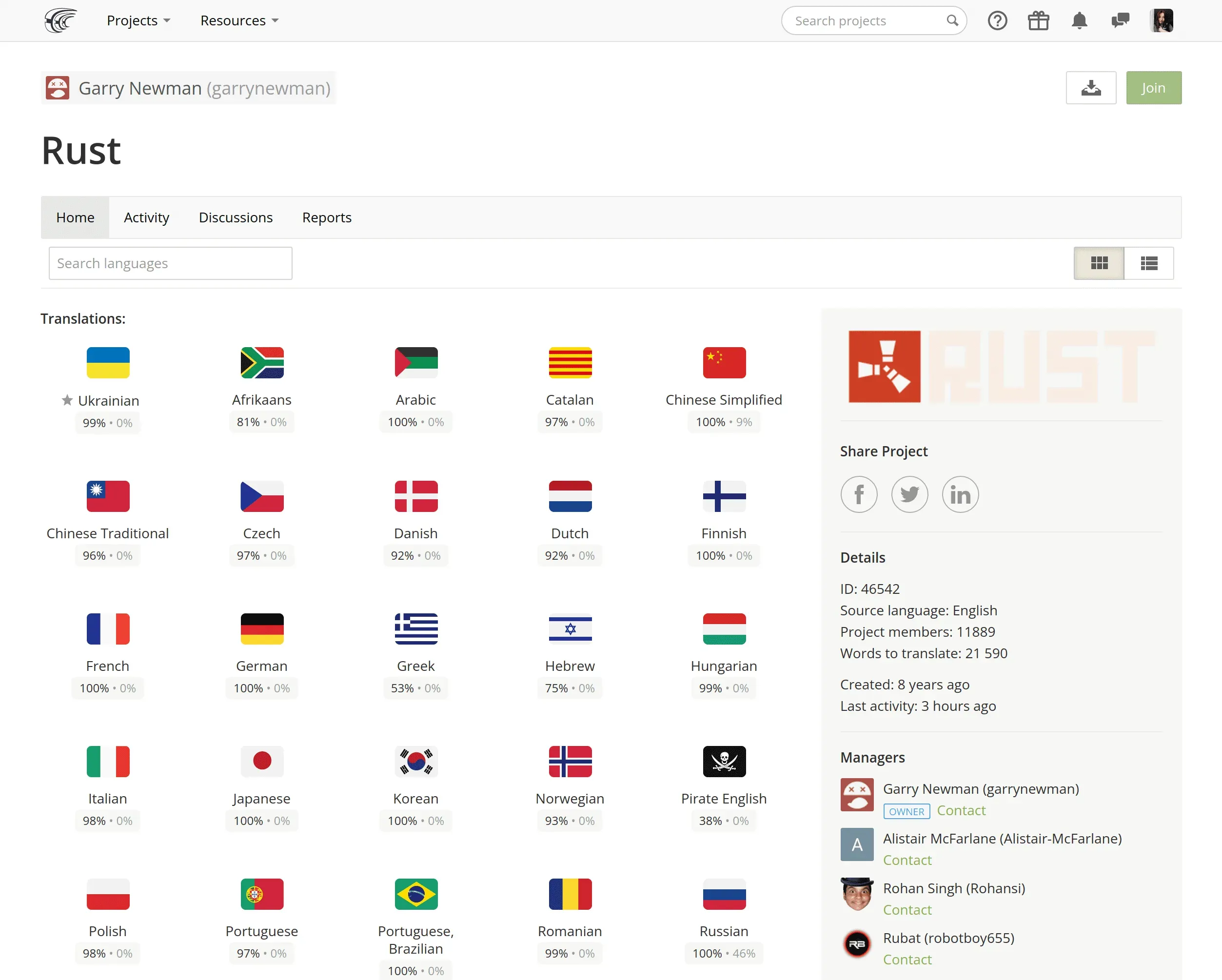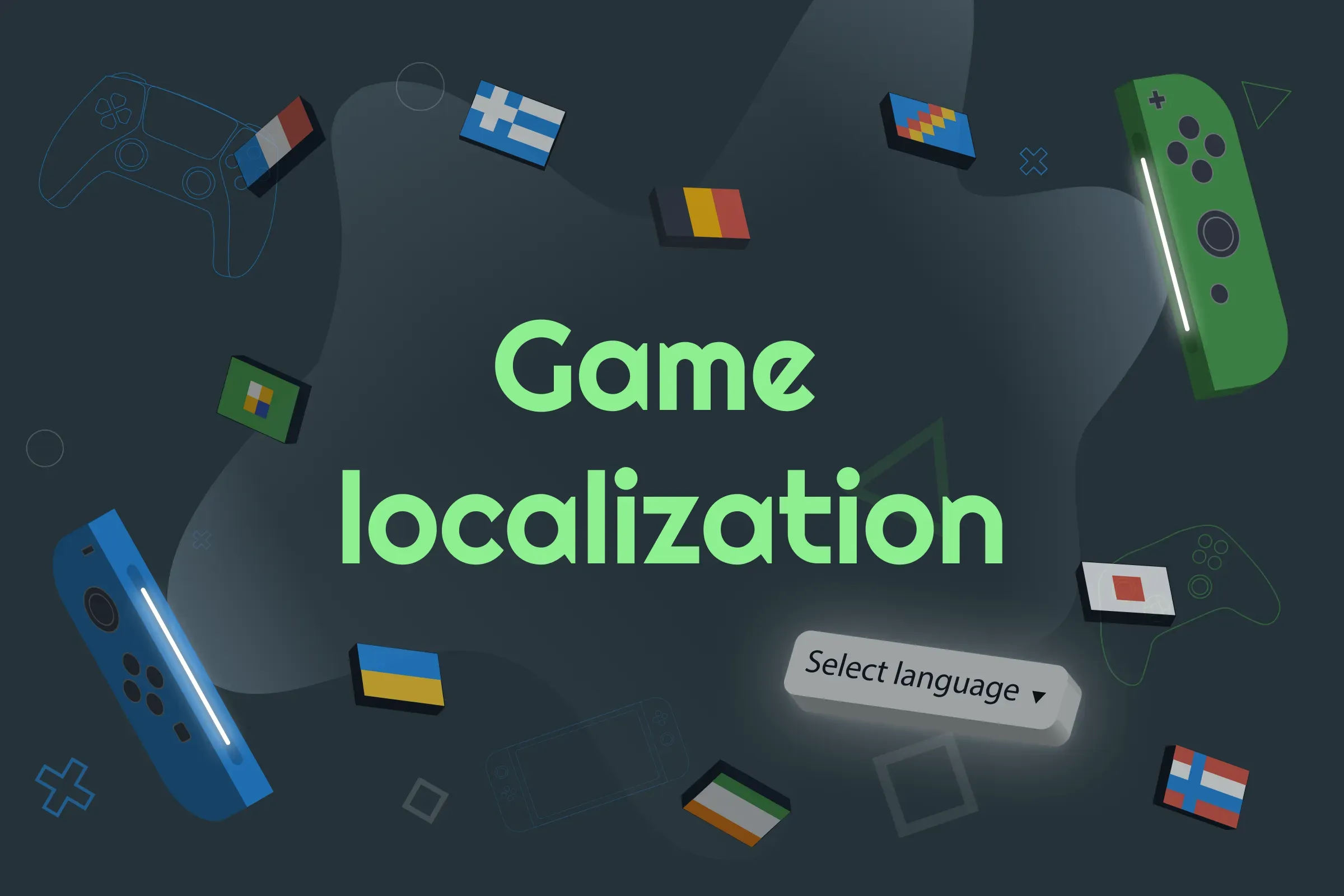From the early days of computer games and the first versions of Nintendo and Sony PlayStation, technology evolved significantly, now video game sector is incredibly large and even broader than the movie and music industries. Even though it doesn’t receive the same public attention, there are over three billion gamers worldwide. It’s 38% of the world’s population.
Localizing games allows you to improve your sales, increase the number of downloads, satisfy your international players, keep your place in a competitive market, and boost your App Store rating.
Video Game Localization: Enter a Global Market
With a nicely prepared localization strategy, translation team, resources, and tools, you can reach a global market and you can not only increase sales but, most important – satisfy your target audience.
The golden rule of great game localization is to keep your players in mind. Since online gamers are worldwide, having a localized game means a broader audience, more players, and more languages in which you can sell your product.
"Bad localization can destroy a player’s experience even in a best-designed game!
Let Your Game Speak Your Customer Language
Remember that a good localized version keeps the context, tone, jokes, hidden meanings, and can’t succeed with mediocre wording or clumsy translations. Your best critics – your players will notice these mistakes, which will probably make playing less enjoyable.
Make sure your localized version feels for players like the game was developed in their native language.
"Localization is done best when it goes unnoticed – when our players from different regions and cultures don’t even realize the game was not created in their own language and/or culture; when it feels familiar and “local” to them. Certainly, the game’s core features need to stay as they are (so when we make a fishing game, it is still a game about fishing after being localized)
Localizing Your Game for the First Time
Planning is essential to the success of any business. Localization can delay release cycles, especially if it isn’t implemented correctly. Plan ahead and include localization in your design process from the very beginning.
"All the stages of game development, starting from the ideation phase, should be done with localization in mind. In other words, localization must be an integral part of game design and development – not something that we leave for the very end and start planning two weeks before the technical launch.
Localization is a continuous process because there is always more content. Continuous localization can mean providing tech support or other user services in various languages for your players. Furthermore, continuous game localization includes any ongoing series of localization efforts, such as announcing software patches and updates, solving issues, rolling out expansion packs, releasing new product versions, additional downloadable content, supplements, and more.
Thanks to automation, you can avoid delays and speed up the translation of new content. Discover more about how to implement continuous localization into your workflow by reading our free e-book.
Content to Include into Your Game Localization Strategy
Localization is more than simply translating the text within your game. First and foremost, the content of the games varies a lot. Every game is different in style, tone, terminology and, of course, in the genre.
Game localization involves a good amount of buttons, plots or characters’ text localization. But there are still a lot more components to consider.
"When looking into the localization of a video game, the adaptation of different aspects of the game should be considered. The success or failure of a video game in a particular market could depend on these adaptations. Some elements to consider aside from the in-game text would be the in-game art, the cover art, and even the title of the game.
Aside from the linguistic localization of the words and their meaning, localization can often further include visual appearance localization (graphics, visual digital artwork, fonts, colors).

For example, choosing the right typography can impact how your product text appears in different languages. Sometimes you need to choose a different text style for some languages, simply because, text may be rendered differently.
"In thinking about the different target markets, game developers can use culturalization strategies to resonate better with those markets. One example of a possible adaptation could include the characters’ style, colors, and even the way they interact with each other.
How about a color choice? It can directly influence an individual’s brand perception. Certain colors have a similar meaning across cultures, however, sometimes other countries can convey a wide variety of symbolic meanings in them. That’s why you need to remember about user personas and demographic features in the early design phase and localization plans too.
"Localization includes translating content into player’s language as well as adapting graphics, design, colors, cultural references, and also adjusting the content to local law and local standards. And the latter refers not only to relatively simple things like date and time formats, converting currencies, or respecting the GDPR, but also, for example, to showing specific types of content, like violence, blood, historical references, LGBT+ themes, or nudity.
A successful localization strategy involves localizing the entire user experience, including:
- the user’s needs research
- creating local personas
- running playtests with participants from different cultures
- carrying out localization A/B tests
In some cases, when talking about large-scale products and big audiences, It may even require some gameplay redesigning or UI and UX changes. That said, It’s better to plan ahead when it comes to localizing your game for a new market.
Localizing Games with Crowdin
With Crowdin, you can localize PC, console, mobile, desktop games, and the additional content like:
- UI, captions, subtitles, in-game text files
- marketing content: banners or posters, in-print, digital, and email advertising
- websites and landing pages
- app store texts
- assets
The localization team can work directly in a cloud-based translation editor, collaborating with the client and other project contributors. You can set a notification to alert them about new content and benefit from all the tools – translation memory, glossary, context material, and machine-translated suggestions. To make the process much more streamlined, you can integrate your favorite tools from the Crowdin Store.
For example, some games like House Party, Rust, Kingdoms Reborn, and Eco by Strange Loop Games have public projects on Crowdin, where their players can help translate or proofread their favorite game.

Unity Game Localization with Crowdin Plugin
Unity is a leading game development platform that’s constantly evolving, attracting a growing community of developers. If you’re using it to create your game, the knowledge of Unity game localization is essential for expanding your audience and increasing sales.For this, you can try the Crowdin plugin for Unity that streamlines game localization with the Unity Localization package and localization program.
In short, this will include the following steps:
- Create localization tables and connect the plugin in Unity.
- Upload content to Crowdin.
- Invite translators, provide context with screenshots, and download completed translations.
For larger projects, consider Crowdin Enterprise for customization.
How to Get Started
- Log in to Crowdin and create your first localization project.
- Automate your workflow of pushing texts, and pulling the translations with Git connectors or API/CLI/ GitHub Actions.
- Connect other integrations with your favorite tools to easier manage the process (iOS or Android SDK, design plugins for Figma, Sketch, machine translation engines). Discover more on Crowdin Store.
- Invite your in-house translators, hire a translation agency, a vendor from Crowdin translation agencies list, or invite your community to help.
Learn more about translation strategies and localize your game content with Crowdin.
Localize your game and reach a global market
Why do you need game localization?
Game localization makes your game available to a worldwide audience. It increases sales and downloads, expands your international player community, and increases your App Store rating.
How do you localize a game?
Aside from the linguistic localization of the words and their meaning, localization can often include visual appearance localization (graphics, visual digital artwork, fonts, colors).
How much does localizing a game cost?
Game localization cost depends on several factors, including the type of content, amount of content, translation strategy you choose (machine engine translation, in-house translators, professional agency and its pricing), and languages you localize your game into.
What are the top languages for game localization?
Currently, the most popular languages for game translation are Spanish, Portuguese, German, French, Chinese, Japanese, Italian, Korean, and Polish.
Diana Voroniak
Diana Voroniak has been in the localization industry for over 4 years and currently leads a marketing team at Crowdin. She brings a unique perspective to the localization with her background as a translator. Her professional focus is on driving strategic growth through content, SEO, partnerships, and international events. She celebrates milestones, redesigns platforms, and spoils her dog and cat.
